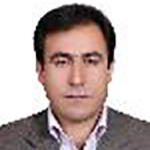A Comparative Study of Flattery Speech act in Persian and English Languages
Author(s):
Article Type:
Research/Original Article (دارای رتبه معتبر)
Abstract:
Speech act analysis, as a significant aspect of discourse analysis and pragmatics, has increasingly drawn the researchers’ attention since John L. Austin (1962) put forward speech act theory, and ever since then, the study of the linguistic structures of speech acts and their functional values have been among the key areas of study in speech act analyses. The present study comparatively explored the manifestations and functions of flattery speech acts in Persian and English languages. To do so, flattery instances were identified and extracted form a corpus of 60 Persian speaking and 60 English speaking film scripts. The speech act instances were extracted from different movie genres including social and family, drama, science-fiction, and romance. The movies were produced between the years 2010-2020. A sample of 343 Persian and 228 English flattery instances were extracted and analyzed on the basis of Hymes’s (1967) model. The obtained results indicated that flattery was used in both Persian and English cultures in order to exert positive influence on the addressees. Moreover, in both languages, the act of flattery was done in both formal and informal situations in an attempt to deceive, compliment, praise, and ridicule. In addition, although flattery speech act was found in both formal and informal situations—in the case of Persian language and culture—, its application in informal and private situations was more frequent than in formal situations. Moreover, the frequency of flattery in Persian language and culture was found to be significantly higher than English.
Keywords:
Language:
Persian
Published:
Language and Translation Studies, Volume:54 Issue: 3, 2021
Pages:
59 to 95
https://magiran.com/p2326059
مقالات دیگری از این نویسنده (گان)
-
Test-Wiseness, Test Anxiety, Reading Strategies Metacognitive Awareness, and Reading Comprehension Test Performance: A SEM Study
Mohammad Ahmadi-Safa *, Melika Majidi-Kia
Journal of English Language Teaching and Learning, Fall-Winter 2023 -
Fairness in Classroom Language Assessment from EFL Teachers' Perspective
Somaye Tofighi, *
Teaching English as a Second Language Quarterly, Spring 2023


